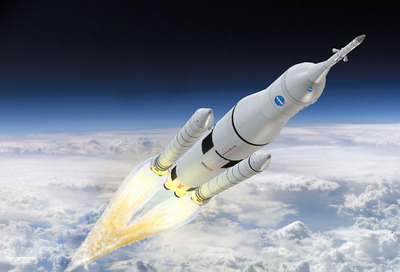 Yes, the venerable Space Shuttle is now retired and host to gawking tourists across the United States, but that doesn’t mean NASA is sitting idle. In fact they’ve embarked on the development of a massive new rocket to take on the task of heavy lifting to outer space: The Space Launch System or “SLS”.
Yes, the venerable Space Shuttle is now retired and host to gawking tourists across the United States, but that doesn’t mean NASA is sitting idle. In fact they’ve embarked on the development of a massive new rocket to take on the task of heavy lifting to outer space: The Space Launch System or “SLS”. Of course, they’re not 3D printing the entire rocket (although we’d love to see a 3D printer that size, but that’s another story). Instead they are using Selective Laser Melting (SLM), a process for 3D metal printing. This enables NASA to save time and cost producing the SLS.
It’s not just turnaround time that attracts NASA. With 3D printing one can design and produce parts that cannot be made in other ways. Older approaches might require a part to be manufactured in multiple pieces that are then bolted together. But think about this design: bolts and bolt holes are extra weight. If you could design the “whole” part and print it at once you’d have a part with less weight and more strength as there are no seams.
That can only mean a lighter, more reliable rocket system.
Via Space-Travel

